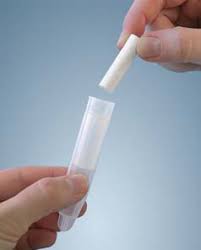Neuroscience of unmet social needs
Ongoing Research: Social isolation effects on adolescent cognition
Loneliness and isolation are increasing in societies all around the world (e.g., Victor 2005, 2012). However, the effects of isolation on cognition are not clear. Importantly, while many studies focus on loneliness in elderly people, a recent large survey (Hammond 2019) found that adolescents and young adults report the highest loneliness levels. Using experimentally induced, short-term isolation we are currently assessing : i) the effects of isolation on adolescent cognition; ii) brain markers that predict individual sensitivity to isolation; and iii) interactions between social media usage and the effects of isolation.
Collaborators: Sarah-Jayne Blakemore , Amy Orben , Stefano Palminteri & Lei Zhang
Neural representation of social craving

Recent work in an animal model suggests one neural system that may be critical in healthy social craving: In mice, dopamine neurons of the dorsal raphe nucleus code for the drive to re-engage in social interactions following acute social isolation. But how is social craving represented in the human brain? And is the neural signature of social craving similar to other forms of motivation (e.g., food craving)? In this study we used fMRI and multivoxel pattern analysis (MVPA) to investigate the neural representation of social craving in the human brain. We found that midbrain regions showed similar responses to food cues after fasting and to social cues after isolation and these responses were correlated with self-reported craving.
MRI data from this study is publicly available here: OpenNeuro
Code used to analyze this data is publicly available here: OSF
Collaborators: Rebecca Saxe & Kay Tye
Effects of acute stress on social cognition




In this project we are investigating the effects of acute stress on behavioral and neural measures of social cognition. We are using a combination of neuroimaging, behavioral paradigms, endocrinological measures (e.g. cortisol, testosterone) and pharmacological administration (oxytocin) to study these effects.
In a behavioral study, we found that self-other distinction is affected by acute stress, but differently in men and women: while women showed increases in self-other distinction, men showed decreases. Our findings suggest that women flexibly disambiguate self and other under stress, enabling accurate social responses, while men respond with increased egocentricity and less adaptive regulation. This might have implications for explaining gender differences in social skills such as empathy and prosociality. [Paper]
Using pharmacological administration of oxytocin in a male sample we found improved self-other distinction during perspective taking suggesting that oxytocin might represent a modulating factor in the effects of stress on self-other distinction. [Paper]
Using functional magnetic resonance imaging (fMRI) we showed that stress increased activation in brain areas associated with the automatic sharing of others’ pain, such as the anterior insula, the anterior midcingulate cortex, and the primary somatosensory cortex. In addition, we found increased prosocial behavior under stress. Furthermore, activation in the anterior midcingulate cortex mediated the effects of stress on prosocial behavior. This research suggests that acute stress may increase prosocial behavior by intensifying the sharing of others’ emotions. [Paper]
Using multivariate pattern analysis of fMRI data we found that acute stress increases the dissimilarity of neural patterns underlying high and low value representation for others. Participants who showed higher dissimilarity also played more favorably for the other. Thus, our results suggest that stressed individuals differentiate more between potential high and low rewards for others suggesting that acute stress increases sensitivity for other people’s rewards. [Paper]
Collaborators: Claus Lamm, Markus Heinrichs, Christian Windischberger, Rupert Lanzenberger and Rebecca Saxe
Social influence on adolescent risk taking


In this project we are investigating how information about choices of others affects risky decision making in adolescents. We developed a task to measure how information about peer choices affects risky decision-making and call it the social Balloon Analogue Risk Task (sBART). The code for running the task (in Matlab/Psychtoolbox) is publicly available here: https://github.com/LTomova/sBART
We found that risky decisions were influenced in the direction of the perceived choices of others – riskier choices of others led to riskier behavior whereas safer choices of others led to less risky behavior. These findings indicate that information about peer choices is sufficient to shape one’s own risky behavior. [Paper]
We are currently investigating the underlying neural patterns of peer susceptibility in risky decision making.
Collaborator: Luiz Pessoa